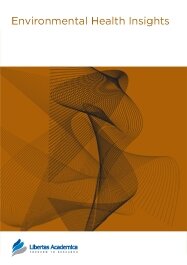

Publication Date: 31 Oct 2008
Journal: Environmental Health Insights

1Department of Internal Medicine and Cardiology, Graduate School of Medicine, Osaka City University, Osaka, Japan. 2Department of Cardiology, Osaka Hospital of Japan Seafarers Relief Association, Osaka, Japan. 3Department of Cardiology, Osaka City General Hospital, Osaka, Japan. 4Department of Internal medicine, Tane General Hospital, Osaka, Japan. 5Department of Cardiology, Ikuwakai Memorial Hospital, Osaka, Japan. 6Division of Cardiology, Bell Land General Hospital, Sakai, Japan. 7Department of Internal Medicine, Izumi City Hospital, Izumi, Osaka, Japan. 8Department of Internal Medicine, Division of Cardiology, Higashisumisyoshi Morimoto Hospital, Osaka, Japan. 9Department of Cardiovascular Medicine, Wakayama Medical University, Wakayama, Japan. 10Department of Cardiology, Tsukazaki Hospital, Hyougo, Japan.
Abstract
Acute myocardial infarction (AMI) is a social burden. However, being able to predict AMI could lead to prevention. A previous study showed only the relation between the lunar phase and the occurrence of AMI, but the period it takes for the moon to orbit around the earth and the period of the lunar phase differ. This study investigated the effect of the gravitation of the moon on AMI. Data was comprised of 1369 consecutive patients with first AMI at 5 hospitals from October, 1984 to December, 1997. The universal gravitation of the moon was calculated and compared to the earth onset time of AMI. Universal gravitation of the moon was derived by G*m/d2 (G: universal gravitation constant, m: the mass of the moon, d: the distance between the center of the moon and the center of the earth). The relationship between m/d2 and the cases of AMI was determined. There was an increase in cases, when there is a distance of more than 399864 km from the center of the earth to the center of the moon. The gravitation of more than 399864 km was determined to be weaker gravitation. It is confirmed that the number of AMI patients significantly increases at weaker gravitation periods in this multicenter trial. In conclusion, these results suggest that the gravitation of the moon may have an influence on the occurrence of AMI.
PDF (227.69 KB PDF FORMAT)
RIS citation (ENDNOTE, REFERENCE MANAGER, PROCITE, REFWORKS)
BibTex citation (BIBDESK, LATEX)
XML
PMC HTML
My experience in publishing our manuscript in Environmental Health Insights was positive. The speed of processing was the fastest of all the journals I have encountered. The peer review and editorial comments were to-the-point and professional. The open reader access greatly enhances article visibility. I would publish again in this journal if I have suitable studies to publish.

All authors are surveyed after their articles are published. Authors are asked to rate their experience in a variety of areas, and their responses help us to monitor our performance. Presented here are their responses in some key areas. No 'poor' or 'very poor' responses were received; these are represented in the 'other' category.See Our Results
Copyright © 2013 Libertas Academica Ltd (except open access articles and accompanying metadata and supplementary files.)
FacebookGoogle+Twitter
PinterestTumblrYouTube